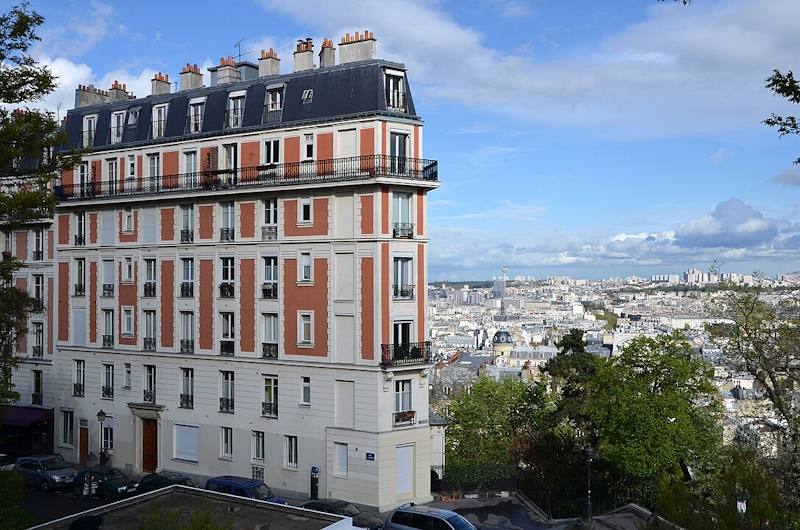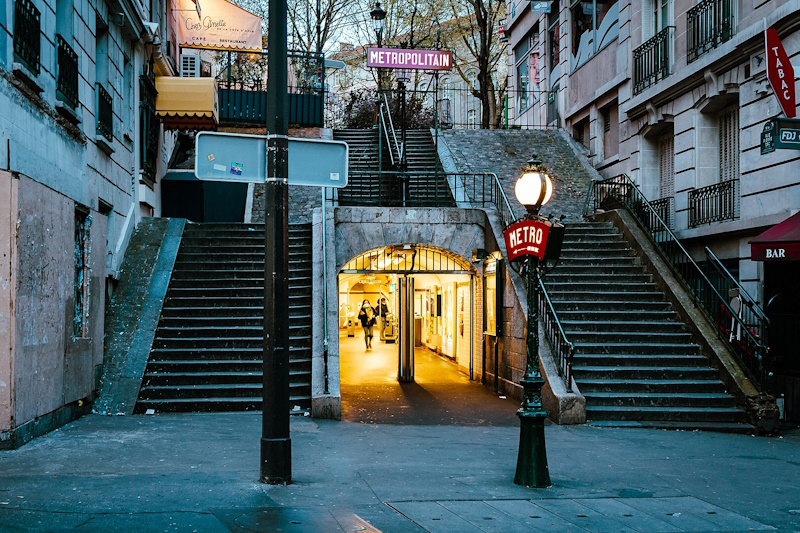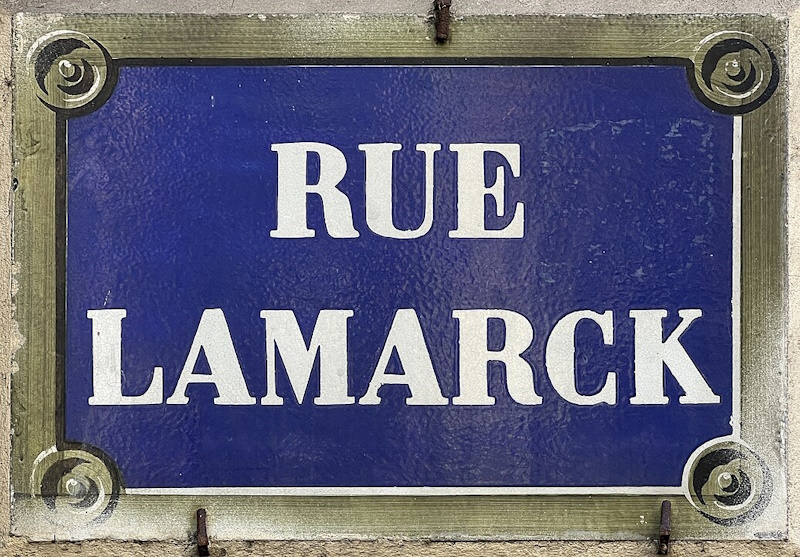Rue Lamarck: The Winding Spine of Montmartre
Most people visit Montmartre for the views from Sacré-Cœur or the Place du Tertre. But few realize there’s a single street that quietly threads its way around the hill, holding layers of Parisian life, war history, and strange legends.
That street is Rue Lamarck.
A Street That Wraps Around the Hill

Rue Lamarck starts at the very top of Montmartre, near Rue Maurice-Utrillo. From there, it curves and descends, wrapping around the butte like a spiral.
It’s long, over 1.5 km, and connects the upper village feel of Montmartre to the grittier edges near Avenue de Saint-Ouen.
Along the way, it crosses leafy stairs, hidden cafés, street markets, and Haussmannian buildings. At some points, it’s so steep it’s split into two one-way directions – one up, one down.
It’s also one of the few streets in Paris where you’ll find a metro station entrance built halfway up a staircase.
Lamarck–Caulaincourt: A Star of the Screen

That metro entrance is at Lamarck–Caulaincourt, opened in 1912 on Line 12. With its art nouveau signage and long spiral stairway, it has made more than one film appearance, including a famous scene in Amélie.
Locals still use it daily, but it often stops visitors in their tracks.
Bombs, Broken Pipes, and a River in the Street
Rue Lamarck wasn’t spared during WWII. In April 1944, Allied bombs hit a German anti-aircraft position near Sacré-Cœur. A chain of explosions ruptured the water system nearby.
According to a witness, the street turned into a “furious river” as water surged downhill from broken pipes. A surreal moment in a neighborhood already full of stories.
Le Panier Lamarck: Everyday Paris in One Stall
Just next to the metro stairs sits Le Panier Lamarck, a no-frills produce stall that serves the neighborhood with fresh fruit, vegetables, and the occasional gossip.
It’s not a tourist stop, it’s part of the daily rhythm. People pick up oranges, talk to the vendor, and maybe sit down at Café Suzanne across the way.
This corner captures something rare: a Montmartre that still feels lived in.
Strange Names on the Doorbells
This quiet stretch of Montmartre has had some surprising residents.
At No. 49 lived Suzanne Belperron, a bold and secretive jewelry designer who turned down Cartier and made her own way.
At No. 43, Marius Borgeaud, the Swiss painter, had his studio. No. 39 housed Maurice Asselin, another painter who captured Parisian life.
Even Lenin makes an unexpected appearance. One story, told much later by painter Jean-Gabriel Domergue, claims Lenin briefly worked for him on Rue Lamarck before the Russian Revolution. He supposedly delivered packages by bicycle.
It’s probably not true, but it still gets retold.
A little-known detail: Nos. 51 to 53 bis sit on the site of ancient Roman thermal baths. Remnants of the fontaine du But, they’re mostly invisible today, but it’s another layer beneath the sidewalk.
A Street with a View
In Jésus-la-Caille (1914), author Francis Carco wrote: “From Rue Lamarck, you see all of Paris.” That’s still true.
The view isn’t framed or staged like Sacré-Cœur, but it’s wide and raw. Especially at sunset.

